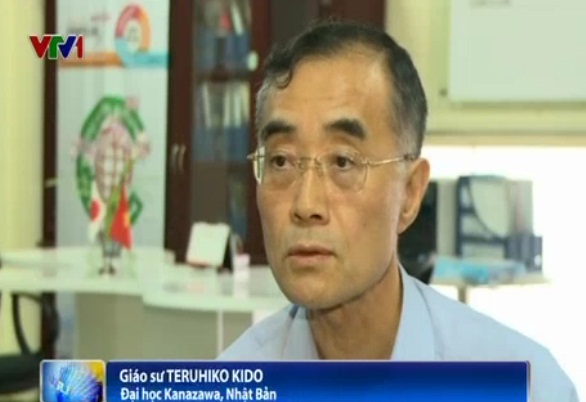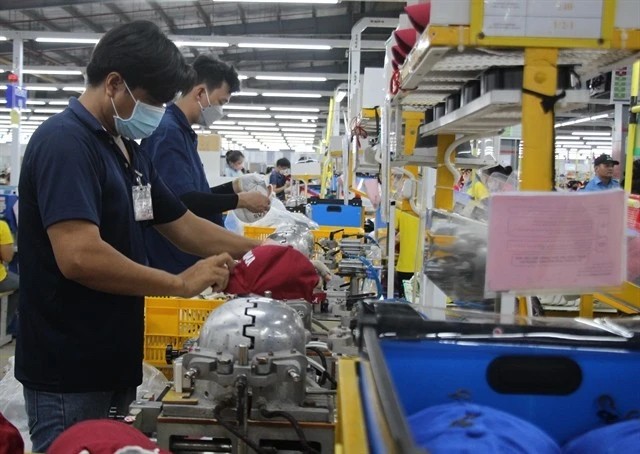Japan helps Vietnam train health workers in AO hot spots
 |
A Japanese researcher has just announced a project on training Vietnamese health workers in addressing problems related to Agent Orange (AO)/dioxin chemical that was sprayed on the country during the war.
Japan's national broadcasting organization NHK quoted Professor Kido Teruhiko from the Kanazawa University and officials from the Japan International Cooperation Agency as saying the project will last for three years in the Vietnamese central province of Binh Dinh’s Phu Cat district.
Previous research has shown a link between exposure to herbicides that contain chemicals called dioxins -- such as Agent Orange -- and prostate cancer in men. The new study, by researchers at Kanazawa University in Japan, reveals for the first time the impact of dioxin exposure on women and babies.
"Dioxin hotspots in the South of Vietnam are of the most severely polluted regions in the world," said Prof. Kido, lead author of the study from Kanazawa University. "We know exposure to dioxins has an impact on our hormone levels, and we wanted to know if this was being passed through generations and potentially putting babies at risk in these areas."
Agent Orange is one of the dioxin-contaminated herbicides that were sprayed during the Vietnam War and used in different industrial and agricultural activities. Their use has resulted in hotspots of dioxin contamination, with concentrations of the chemical two to five-fold higher in affected areas in southern Vietnam than in non-contaminated regions. Dioxins are endocrine-disrupting chemicals (EDCs) -- they interfere with how hormones send messages to each other around the body. EDCs have been implicated in causing birth defects, cancer and neurodevelopment disorders. In particular, dioxins have an effect on a hormone called Dehydroepiandrosterone (DHEA), which is responsible for male and female characteristics in humans. Dioxins put these out of balance, leading to health problems and disfigurement.
"Decades of industrial development and chemicals released during the Vietnam War have led to high levels of dioxins in the soil and atmosphere and people are absorbing these chemicals from the food they eat and the air they breathe," said Prof. Kido. "We know dioxins have an impact on our hormones, so we wanted to see whether they were being passed from mother to baby."
In the new study, the team assessed 104 women with their newborn babies from two carefully selected locations. They chose a region in northern Vietnam, which was not occupied by the United States Air Force, and Bien Hoa, an industrial city where the Americans stored approximately 50% of AO and where there were at least four leaks in 1969-1970. Despite the natural elimination of dioxins in the past five decades, environmental and human samples around this area still contain high levels of the chemical.
The scientists analyzed the level of dioxin in the mothers' breast milk, and tested non-invasive samples of saliva from the babies for levels of the hormone DHEA. The results showed a nearly three-fold increase in DHEA in babies from the dioxin hotspot compared to non-contaminated regions. This was linked to dioxins being transferred from mother to baby through their umbilical blood and breast milk.
He unveiled the detection of a high level of AO/dioxin contained in milk of nursing mothers in the area, adding that the rate of local underweight children is also high.
As such, he has planned to train the health workers to check the dioxin level in breast milk and provide healthcare consultations for local mothers.
The professor is experienced in studying AO/dioxin impact. He hopes to use results of his research to improve the well-being of Vietnamese people.
The US army sprayed some 80 million litres of toxic chemicals, 61 percent of which was Agent Orange containing 366 kilograms of dioxin, over nearly one quarter of the total area of South Vietnam from 1961 to 1971.
Preliminary statistics show that 4.8 million Vietnamese people were exposed to the toxic, and about 3 million became victims. Tens of thousands of people have died while millions of others have suffered from cancer and other incurable diseases as consequences of exposure. Many of their offspring have also suffered from birth deformities./.
Recommended
 National
National
Vietnam News Today (Jun. 7): Prime Minister works with Estonian firms to accelerate projects in Vietnam
 National
National
Vietnam News Today (Jun. 6): Foreign Investment in Vietnam Surges in Five Months
 National
National
Vietnam News Today (Jun. 5): PM sets off for attendance at UNOC 3 in France, official visits to Estonia, Sweden
 National
National
Vietnam News Today (Jun. 4): Vietnam - Promising Candidate for Southeast Asia’s Next Powerhouse
 National
National
Shangri-La Dialogue 22: Vietnam Highlights Some Issues of Ensuring Stability in a Competitive World
 National
National
Vietnam News Today (Jun. 3): PM Pham Minh Chinh to Attend UN Ocean Conference, Visit Estonia, Sweden
 National
National
Vietnam News Today (Jun. 2): Vietnamese Trade Mission Sounds Out Business Opportunities in United States
 National
National
